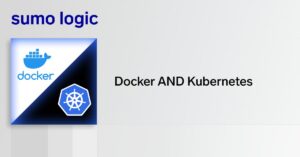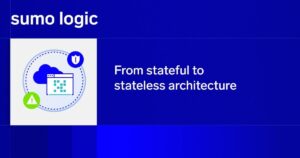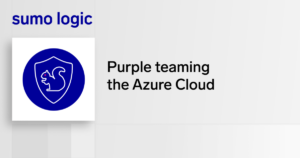For the record, as I’m writing this, Docker 1.12 has not yet been released for production. It’s still on RC4. But based on the information that Docker has released so far about Docker 1.12, as well as the changelogs on GitHub, it’s pretty clear at this point what the new release is going to look like.
The big news: Swarm is now built into Docker
By far the biggest (and most widely discussed) change associated with Docker 1.12 is that Docker Swarm, Docker’s homegrown container orchestration tool, is now built into Docker itself. Docker announced this change with much fanfare at Dockercon back in June.
Built-in Swarm means that Docker now offers container orchestration out of the box. There is no additional work required for setting up an orchestrator to manage your containers at scale.
At the same time, Docker is keen to emphasize that it is committed to avoiding vendor lock-in. Kubernetes and other container orchestrators will remain compatible with Docker 1.12.
Of course, by offering Swarm as an integral part of the Docker platform, Docker is strongly encouraging organizations to use its own orchestration solution instead of a third-party option. That has important implications for companies in the Docker partner ecosystem. They now arguably have less incentive to try to add value to Docker containers by simplifying the management end of things, since Docker is doing that itself with built-in Swarm.
As far as Docker users (as opposed to partners) go, however, Swarm integration doesn’t have many drawbacks. It makes Swarm an easy-to-deploy orchestration option without invalidating other solutions. And Swarm itself still works basically the same way in Docker 1.12 as it did with earlier releases.
Version 1.12 feature enhancements
Built-in Swarm is not the only significant change in Docker 1.12. The release also offers many technical feature enhancements. Here’s a rundown…
Networking
Docker container networking continues to evolve. Two years ago it was difficult to network containers effectively at all.
Now, Docker 1.12 brings features like built-in load balancing using virtual IPs and secured multi-host overlay networking. There are new networking tools built into Docker 1.12 as well, including the –link-local-ip flag for managing a container’s link-local address.
Container management
Docker 1.12 can do a fair number of cool new things when it comes to managing containers.
Containers can now keep running even if the Docker daemon shuts down using the –live-restore flag. You can get execution traces in binary form using trace on the Docker CLI. Docker supports disk quotas on btrfs and zfs, the most common Linux file systems after ext4 (and maybe ext3).
Perhaps most interestingly, Docker 1.12 also features experimental support for a plugin system. You can use the plugin command to install, enable and disable Docker plugins, as well as perform other tasks. The list of Docker plugins currently remains relatively small, but expect it to grow as the plugin system matures.
Log Management
Log reading and writing has improved for Docker 1.12, too. Docker logs now play more nicely with syslog, thanks to the introduction of support for DGRAM sockets and the rfc5424micro format, among other details. You can also now use the –details argument with docker logs to specify log tags.
Remote API
Last but not least are changes to the Docker API for managing remote hosts. Several new options and filters have been introduced in Docker 1.12. In addition, authorization has been enhanced with TLS user information, and error information is returned in JSON format for easier processing.
The remote API binary has also now been split into two programs: the docker client and dockerd daemon. That should make things simpler for people who are used to working with the Docker CLI.
There’s even more to v1.12
The list of changes in Docker 1.12 could go on. I’ve outlined only the most significant ones here.
But by now, you get the point: Docker 1.12 is about much more than just a bump up in the version number. It introduces real and significant changes, highlighted by additional features that provide novel functionality. And there’s built-in Swarm, too, for those who want it.
Editors note: Docker 1.12: What You Need to Know is published by the Sumo Logic DevOps Community. If you’d like to learn more or contribute, visit devops.sumologic.com. Also, be sure to check out Sumo Logic Developers for free tools and code that will enable you to monitor and troubleshoot applications from code to production.
About the Author
Chris Tozzi has worked as a journalist and Linux systems administrator. He has particular interests in open source, agile infrastructure and networking. He is Senior Editor of content and a DevOps Analyst at Fixate IO.


